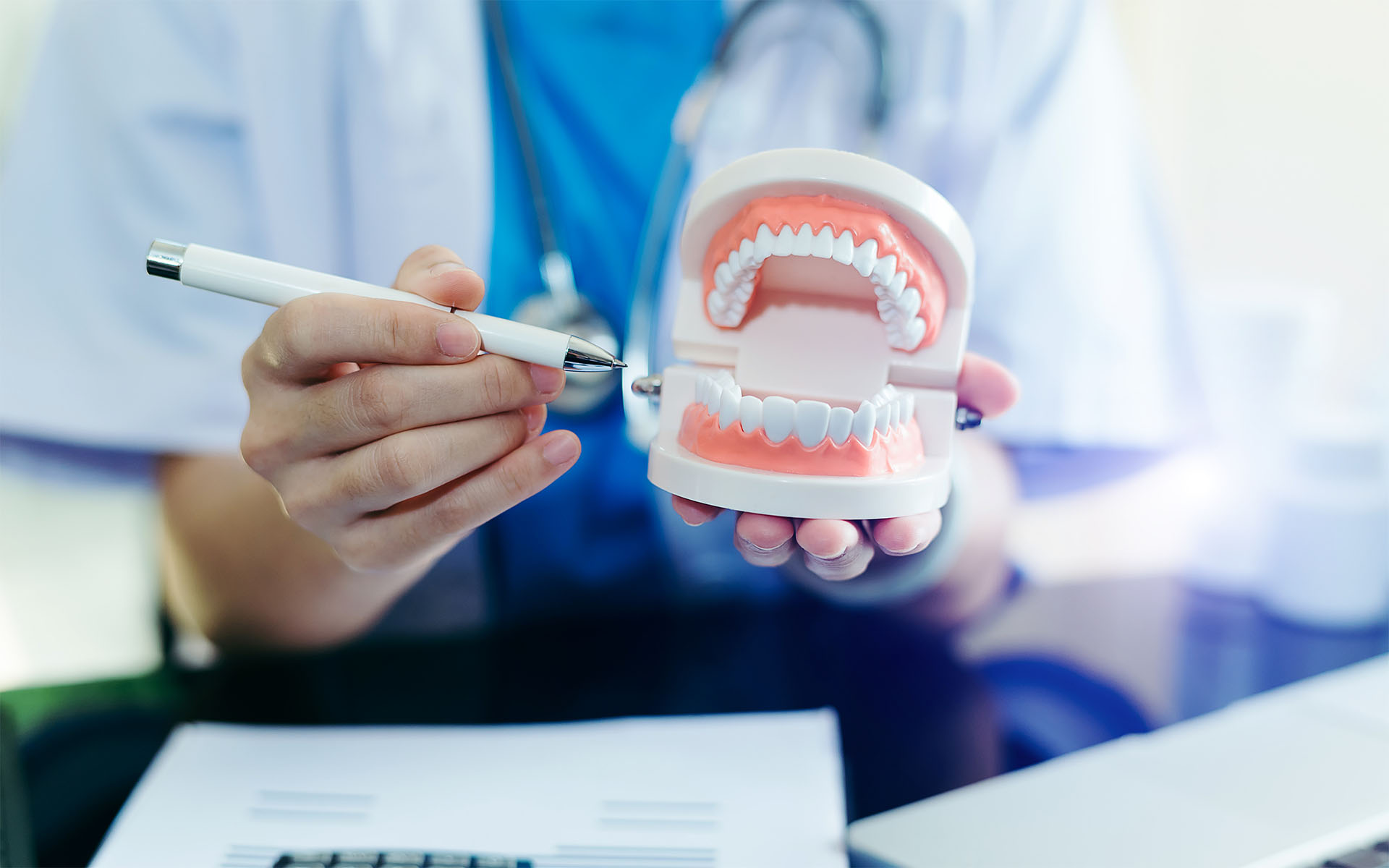
What is a Dental Bone Graft?

The dental bone graft is a tissue that will restore volume and density to your jaw in areas where bone loss has occurred. The tissue for the graft, also called bone graft material, can be taken from your own body (autogenous), this is called autogenous grafting. The allograft graft is taken from the human tissue bank and placed in the required area, where it is important to make sure that the tissue is compatible. Another common option is synthetic bone grafts.
After the dental bone graft is placed in the required area, your body starts the repair work in the area where the tissue is placed and wraps the tissue like a part of the body. In other words, the dental bone graft is like a scaffold from which your own bone tissue can grow and regenerate. In some cases, your dentist uses PRP, or platelet-rich plasma, for a better result when placing the dental bone graft. PRP is taken from a sample of your own blood and when used with a dental bone graft, it promotes healing and tissue regeneration, resulting in better results.
In Which Situations Is Dental Bone Graft Used?
A dental bone graft is usually needed by people with bone loss in their jaw. This procedure may be recommended in the following situations:
- When tooth extraction is required in the area of bone loss
- In cases where dental implants are required to be applied to the area where bone loss is experienced
- When the jaw needs to be reconstructed before getting a denture
- In case of bone loss due to periodontal disease
Tooth bone graft is generally used for four different purposes. These:
- Socket Protection: This type is also called graft back protection. The graft should be placed in the socket as soon as possible after tooth extraction. The placed dental bone graft fills the cavity of the extracted tooth and prevents the socket edges from collapsing.
- Back Augmentation: The supporting jawbone may become thinner when experienced with long-term missing teeth and may remain weaker than before. Your dentist will want to increase the volume and width of the jawbone with ridge augmentation, especially when implants or other restorative procedures are required. In this way, your jawbone will become a more solid basis for the procedures to be performed and better results will be obtained.
- Sinus Elevator: The maxillary sinuses, located just above the upper posterior teeth, may descend when the upper posterior teeth are missing. In this case, these sinuses may occupy the space once occupied by the roots of the teeth. In such a scenario, implants to be placed will penetrate the sinus membrane and are therefore not preferred. To solve the problem, your oral and maxillofacial surgeon or periodontist will perform a sinus lift and raise the sinus back to its proper position. A dental bone graft is then placed under the sinus, creating a solid foundation for dental implants.
- Periodontal Bone Graft: The bone that supports the teeth can be eroded due to an infection from a disease of the gums, which can cause the teeth to wobble. A periodontal bone graft is placed around an existing tooth to reduce the mobility caused by wear on the bones that support the teeth and to support these bones.
Considerations After Dental Bone Graft
Pain, swelling and bruising may occur after dental bone grafting. These are considered normal side effects that can be managed with painkillers and should subside within a few days. If antibiotics have also been prescribed by your dentist, you should use them exactly as prescribed.
Within a few days after the operation, there may be small pieces of bone, such as a grain of salt or sand, coming out of the area where the graft was placed. In such a case, you do not need to worry.
Dental bone grafts generally have high success rates. But there is a possibility of failure, especially among people who smoke or have certain medical conditions. This is a possibility that can occur with any procedure. If you are experiencing dental bone graft failure, you may experience the following symptoms:
- Pain or swelling that starts after the first week and gets progressively worse
- Formation of pus or drainage at the bone graft site
- gum recession
- No improvement in jawbone volume
If you have one or more of the above symptoms, you should contact your dentist immediately. Under normal conditions, the healing time of the dental bone graft is one to two weeks. You should feel back to normal within a week or two, but full dental bone graft healing can take three to nine months, sometimes longer. Recovery times depend on several factors, including the type of graft, the area where the graft is placed, and your body's capacity to heal. In most cases, people receiving treatment can return to work or school the day after the procedure without any problems.